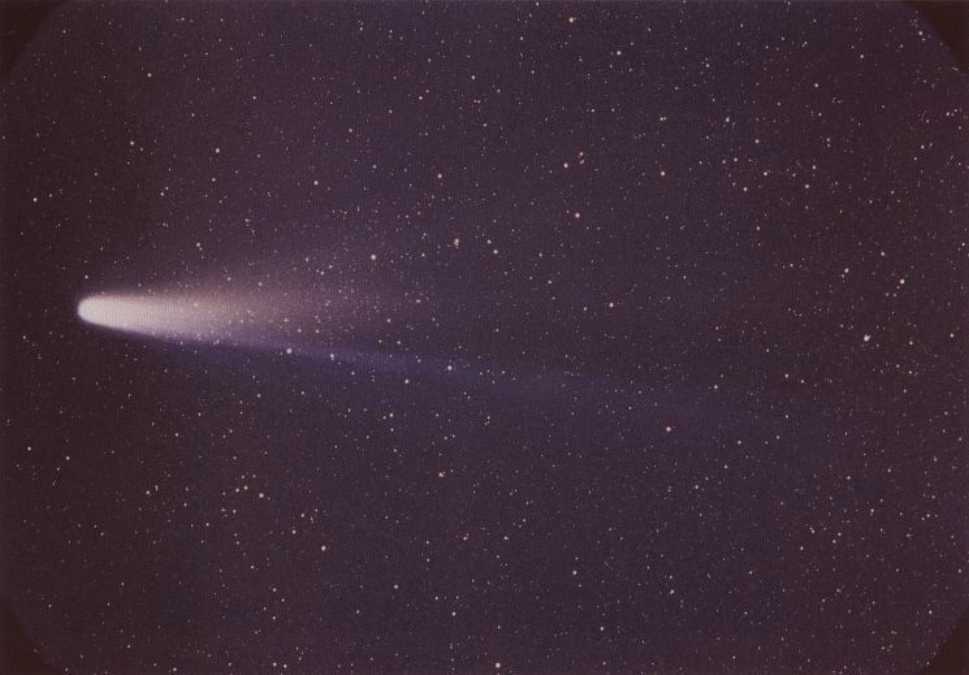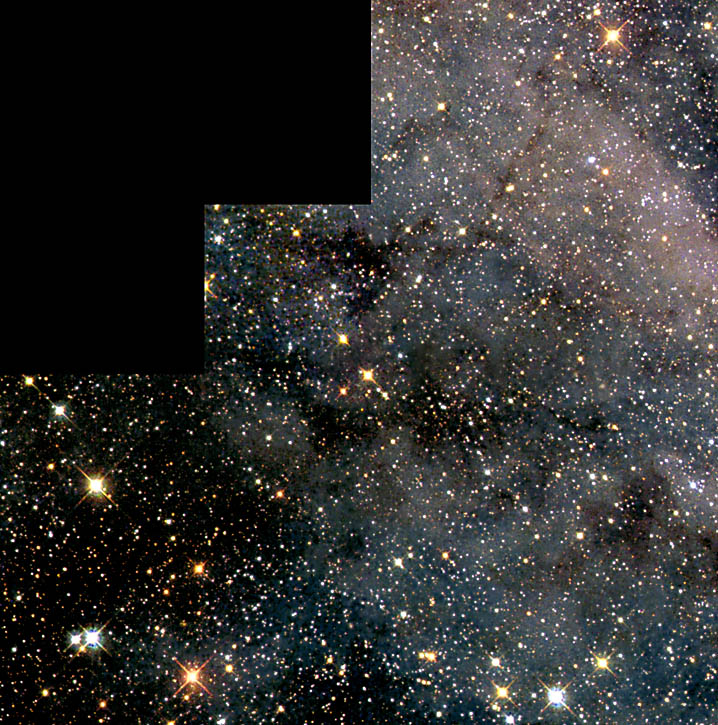The Rest of the Universe - Back to Planet Walk
 Halley's
Comet, Courtesy NASA.
Halley's
Comet, Courtesy NASA.
Our Solar System does not end with Pluto. A diffuse
cloud of icy bodies called comets surround the Sun in an area extending
more than 4.5 trillion miles from the Sun. There may be more than 1 trillion
comets in the Solar System.
Comets are small compared to planets, the largest
being about 100 miles in diameter. They are made of frozen gasses such
as carbon dioxide, water, nitrogen, and methane, as well as dark carbonaceous
or rocky matter. Comets can be thought of as huge dirty snow balls. Their
orbits sometimes bring them close enough to the Sun to be visible. They
then warm up, sublimate, and cast out a plume of matter that is pushed
out by the pressure of solar radiation. This is the comet's tail.
The  nearest star to us is our Sun. Other than our Sun, the next nearest star
is Proxima Centauri 4.3 light years away. A light year is the distance
light travels in one year going at 186,000 miles per second, or 98,000,000,000
miles. On scale with this model Proxima Centauri would be 34.4 miles away,
down at the Jersey Shore in relation to the location of the Planet Walk.
nearest star to us is our Sun. Other than our Sun, the next nearest star
is Proxima Centauri 4.3 light years away. A light year is the distance
light travels in one year going at 186,000 miles per second, or 98,000,000,000
miles. On scale with this model Proxima Centauri would be 34.4 miles away,
down at the Jersey Shore in relation to the location of the Planet Walk.
The Sun, Proxima Centauri, and over 100 billion other
stars comprise the cluster of stars that we call our Milky Way Galaxy.
The next nearest galaxies are the small Clouds of Magellan and the dwarf
galaxy Sagittarius. Our Milky Way Galaxy is only one hundreds of millions
of galaxies in the vast expanse of space and time that we call the Universe.
We hope that you enjoyed our Planet Walk.
Stars of the Greater
Magellanic Cloud, taken by the Hubble Space Telescope.
Courtesy NASA and NSSDC.
 nearest star to us is our Sun. Other than our Sun, the next nearest star
is Proxima Centauri 4.3 light years away. A light year is the distance
light travels in one year going at 186,000 miles per second, or 98,000,000,000
miles. On scale with this model Proxima Centauri would be 34.4 miles away,
down at the Jersey Shore in relation to the location of the Planet Walk.
nearest star to us is our Sun. Other than our Sun, the next nearest star
is Proxima Centauri 4.3 light years away. A light year is the distance
light travels in one year going at 186,000 miles per second, or 98,000,000,000
miles. On scale with this model Proxima Centauri would be 34.4 miles away,
down at the Jersey Shore in relation to the location of the Planet Walk.
 Halley's
Comet, Courtesy NASA.
Halley's
Comet, Courtesy NASA.